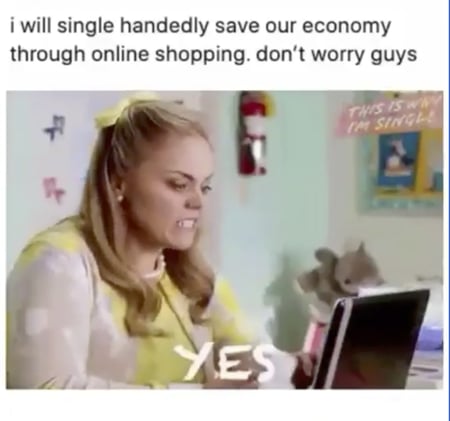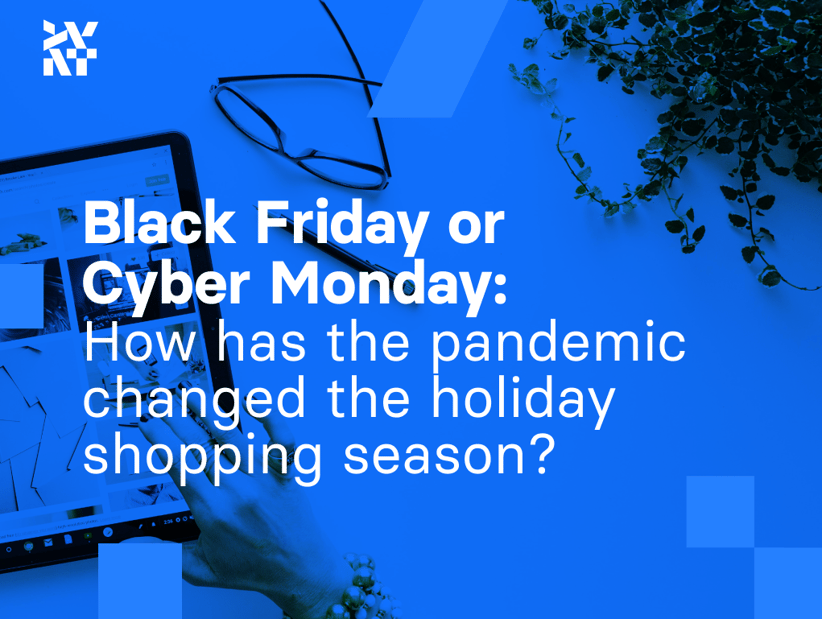It’s November 2021, and almost two years have passed since the coronavirus pandemic began. There’s no doubt that our behavior, in many aspects, has changed, and shopping is definitely one of those areas.
“More than 60 percent of global consumers have changed their shopping habits, and they intend to stick with them.”
Black Friday and Cyber Monday: Is there still any difference?
Black Friday, the annual holiday shopping tradition, came to Europe from the United States, and it refers to the day after the U.S. Thanksgiving holiday. This so-called “sales day” for shoppers and retailers was the unofficial launch of the holiday shopping season. As people went crazy with buying and celebrating promotions, Black Friday madness has expanded to cover the whole weekend and Cyber Monday, too, as the premier day for online shopping.
Black Friday has always been associated with a visit to brick-and-mortar stores. Lines, crowds, and that adrenaline rush while hunting for the best bargains of the year is the perfect definition of a shopping holiday. By contrast, Cyber Monday was focused on discounts and sales in online stores.
Does this division in the shopping world still exist? Most of us have access to the internet and smartphones which give us the possibility to shop without having to leave the couch. The eCommerce sector is not only growing every year by billions, but retailers are also offering their customers solutions that make the shopping experience better.
Online stores, wanting to increase sales, started to implement Black Friday promotions much earlier than the actual date of Black Friday. What’s more, discounts for eCommerce shopping last much longer than only for that one day or even the weekend after. This makes the line between Black Friday and Cyber Monday blurry.
Due to COVID-19 restrictions, the scene in stationery stores and shopping malls looked totally different in 2020. Among other things, Black Friday sales mostly shifted to the online world. The pandemic kept the crowds thin, and for online retail, this meant a significant increase in sales. This unexpected situation pushed eCommerce to grow even more than it was before.
“E-commerce continues to boom with 37 percent of consumers planning to shop more online this year.”
What has changed?
1. Shopping habits
COVID-19 convinced many people to stay at home to avoid crowded places like, for example, shopping malls. As the pandemic situation continues to exist, some of those patterns have become ingrained. Black Friday will not be the same anymore. That’s due to the fact that online shopping provides people with the convenience of buying from the comfort of their favorite chair where they also feel safe.

2. A big change in loyalty
“40 percent of consumers have tried new brands during the pandemic, and that behavior will continue over the holiday shopping period.”
COVID-19 has impacted the supply chain for many brands and products. Shortages in goods from some suppliers have made consumers look for them at different retailers. Also, with more time spent on the internet, consumers are more willing to browse more channels and brands looking for the best deals and discounts. For eCommerce, Black Friday means more traffic but also the need to focus more on omnichannel marketing to engage with customers on a different level. Additionally, the average cost of gaining a sales lead during the holiday shopping season will be higher than usual. However, attracting a customer may result in a greater likelihood of them making a purchase than in the past.
To be competitive in the online market, stores can’t only exist. They need to rapidly change and use the best-of-class modern technologies as for example Progressive Web Apps to provide their customers with the best user experience and make the buyer’s journey fun and stress-free.
3. Innovations in eCommerce
COVID-19 has certainly accelerated the development of new technologies in eCommerce and led to the emergence of many innovative solutions. These solutions are to help customers with the effects of the pandemic and to improve purchasing processes, but also to convince them to make a purchase.
One of those innovative solutions is, for example, "click and collect”. That’s when a customer makes a purchase online and then picks up already packed and paid-for packages. This solution not only makes the customer safer and the store less crowded but also saves time. Click and collect is expected to stay with us for the foreseeable future. It’s a great example of a multichannel strategy that brands and retailers can adopt to increase their sales.
Another solution is “buy now, pay later." This solution wasn’t created during the pandemic, but it was popularized by it. This payment method allows customers to pay for the goods in equal installments in the future, often without paying any interest. Currently, BNPL is a very popular method that is often used to pay for online purchases, especially by younger consumers.
The fact that people will always buy online is certain. So, in order to help customers make a purchase, you should properly prepare your eCommerce for increased traffic during this holiday shopping period. Take care of your marketing, and don’t forget to take into account the psychological aspects of the quickly-changing consumer behavior. Check out our Black Friday checklist to see exactly what you need to do, and we’re sure that the results will surprise you.
Published November 4, 2021











